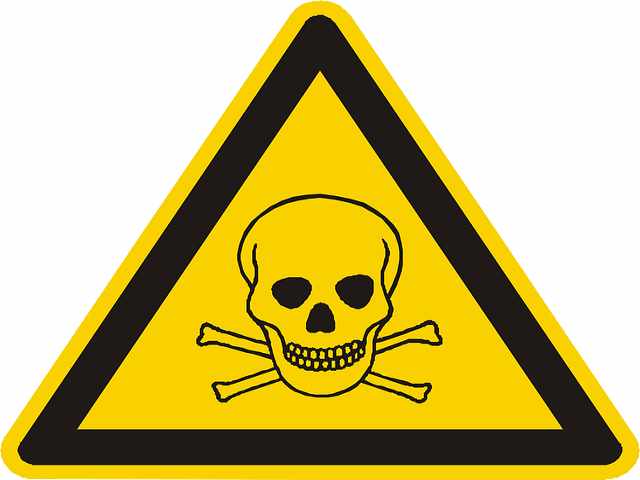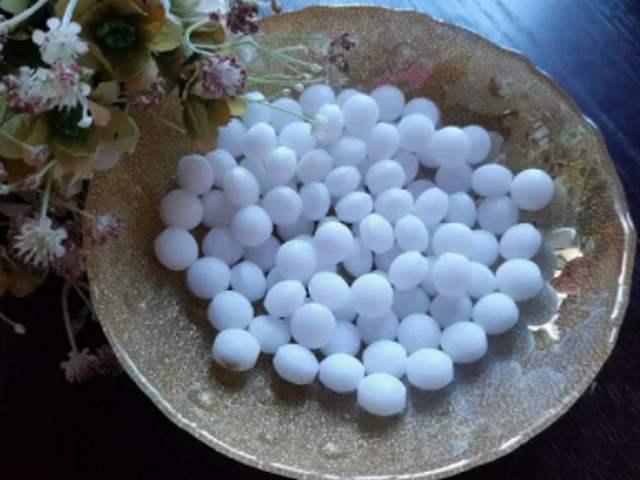Options That You Can Consider To Get Rid Of A Mole
Please see our prior blog article titled, “How to Prevent Moles.” This article includes a complete section on the topic of grub and insect control. Grub and insect control WILL NOT kill moles or reduce their reproductive rates.

Castor Oil is a thick natural seed oil known as “Ricinus Communis.” It is classified as a repellant and is a primary ingredient found in a number of commercial products. Castor oil is placed on your lawn with either a hose-end sprayer or broadcast spreader. The oil’s supposed effectiveness is based on the fact that moles find the smell irritating and it makes their food unappealing. Most studies performed on castor oil effectiveness show some limited benefits.
Consider trying castor oil AFTER you have addressed a resident mole population. If you apply such a topical before eliminating a moderate to severe mole infestation, castor oil may push a resident mole population around your yard, often causing more damage. In situations where moles are originating from an uninvolved neighbor’s yard, we often recommend trying to create a 10-15 foot castor oil barrier along the property line. Above all, you should try this only after your property’s resident moles have been eradicated.
Castor oil is somewhat costly because it will metabolize relatively quickly and also wash out of the soil during thunderstorms. In Minnesota, it must be applied about every 3 – 5 weeks. Castor oil is a natural product. It is generally considered safe for animals. However, if consumed by pets it may cause minor diarrhea. Dogs have a tendency to roll around in it, causing it to stick to their fur. Castor oil WILL NOT kill moles or reduce their reproductive rates.

There are many products marketed as mole and vole poisons. In general, poisons fall into two classifications; neurotoxins that affect the central nervous system and anticoagulants that cause an animal to bleed to death. We believe that poisons are more effective with herbivores and less effective and too risky for moles. In the case of herbivores, poison can be safely secured and is often placed deep in the ground. Moles are insectivores and hunt by sound and smell. They prefer to eat things that are soft, alive and wiggling near the surface of your yard. Therefore, to be effective for moles, poisons need to be placed very close to the surface of your grass and in an unsecured and unsafe fashion.
Poisons are indiscriminate in what they kill. Unguarded toxins in your lawn carry risk factors for non-targeted animals like birds, pets, and children. To learn more about unintentional poisoning, please visit the FAQ section of our website. Unsecured poisons are also prone to moisture breakdown, contamination from other lawn chemicals, and dispersion to unintended places. Poison MAY kill moles and reduce their reproductive rates, but at negligible levels and not without risk.

Mothballs are a type of poison that contains high concentrations of insect repellent. Long-term exposure to mothball fumes can harm pets and people. If a pet ingests mothballs the pet will need to visit a veterinarian. Little evidence exists to suggest that mothballs are effective for mole extermination but should a mole consume a mothball it will most certainly die. Mothballs MAY kill moles and reduce their reproductive rates, but at negligible levels and not without risk.

Put Down Chewing Gum Or Other Edibles
An old one that predates the internet is chewing gum – passed down from generation to generation and probably perpetuated by the folks at Wrigley! The technique involves taking the yellow wrapper off a piece of Juicy Fruit chewing gum and placing the aluminum foil wrapped gum within a mole tunnel. The moles are supposed to come along and eat the gum and aluminum foil causing them to die of digestive problems.
Remember, moles hunt by sound and smell. In other words, they prefer to eat things that are alive and wiggling near the surface of your yard. They really don’t chew gum! Bottom line is that moles don’t like to eat juicy fruit gum or any of the other edible things placed within their tunnel systems so these items do not fall into the category of the best way to get rid of a mole. Chewing gum or other edibles WILL NOT kill moles or reduce their reproductive rates.

What do mothballs do to moles?
You can still use mothballs to chase away moles as they can drive moles out of your garden. For this, you would add to insert the mothballs into mole tunnel systems.
The mole tunnels you use must be active, one used by the mole. If you put the mothballs in an inactive tunnel, it would not be effective as the mole won’t contact it. Later in this article, we will explain how to check for an active tunnel.
It would be best if you had a handful (or two of these mothballs, depending on the extent of mole damage In your garden). By simply placing mothballs at least 7 inches from each other, you make the mothballs more effective.
The smell of mothballs irritate moles, so they abandon that tunnel altogether or leave your garden for good.
However, mothballs do not make your mole problem magically disappear.
Without other control measures, moles would dig up another tunnel and abandon the one with mothballs.
They could also displace the mothballs when digging through, making them ineffective. This is why you shouldn’t depend on mothballs to get rid of moles.
Yes. Mothballs and moth flakes are harmful to humans.
Do not be deceived by how they look; mothballs are toxic pesticides that release gases that can constitute health problems over time.
Also, adding mothballs to your garden is dangerous as the gases they release can seep into your soil and be taken up by plants.
If mothballs don’t work, what can you use to get rid of moles?
Head over to the next section.
Can Dogs Get Moles? | Wag!
There’s nothing more annoying than seeing your garden invaded by pests, especially very destructive ones like moles and voles. These types of pests can completely ruin your garden, hurt your plants, and make you give up on gardening.
While there are a lot of home remedies and chemicals that are touted to repel moles, one that’s very common is mothballs. Many people believe mothballs can effectively get rid of moles once and for all.
We’re going to take an in-depth look at these pesticides and see if they work against a mole problem or if you would be wasting your time using them.
Moles are rodents, with a smooth fur that looks very soft, almost like velvet. They have tiny eyes covered by fur, and unlike most rodents, they do not have an external ear.
Instead, they have an ear canal covered by lots of furs. Moles are usually 6 to 9 inches long, although some species don’t grow up to 6 inches in length.
So, if you see an animal that fits the description above with long digits and a hairless, pinkish snout, you can be sure you are dealing with a mole.